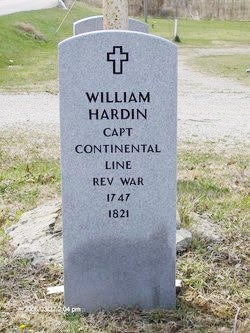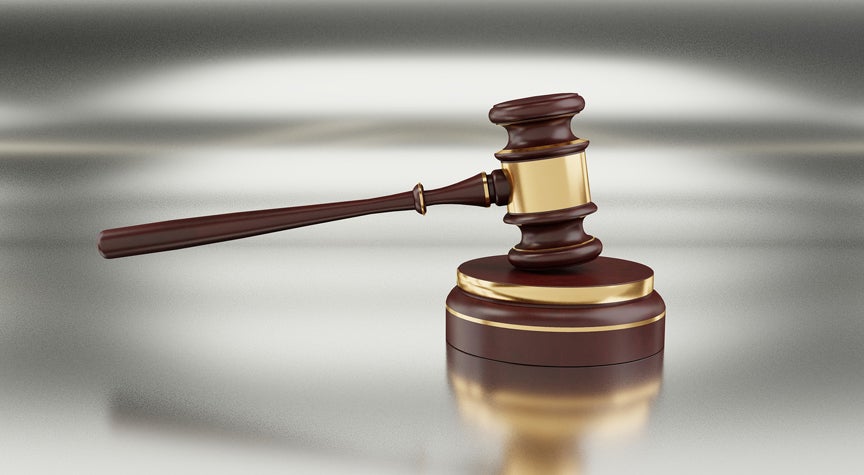Big Bill was a man of courage
Published 3:51 pm Wednesday, April 26, 2023
|
Getting your Trinity Audio player ready...
|
BY JADON GIBSON
Contributing writer
William “Big Bill” Hardin was a man of great courage and well skilled in pioneer living. He was called Big Bill by the Indians but in the parlance of the pioneers he became known as Indian Bill because of his history in dealing with them. Some historians have mentioned Hardin in the same breath with Daniel Boone and other men who earned fame during the time the country was settled. Col. Hardin had a major impact on Hardin and Breckenridge counties in Kentucky. Hardin County was named after him.
He led his and other pioneering families to a desolate place in what is now western Kentucky. They had continual skirmishes with the Indians who did not want them to settle there. Even after the pioneer stockade was built the Indians harassed them by taking potshots at the residents who had to leave the fort to cut wood or to do other chores.
Something had to be done. The men couldn’t leave altogether because some had to remain to protect the fort. The Indians could conceivably attack with such a force the residents might not be able to defend themselves. This was a grave concern for many in early America.
Big Bill devised a plan that would cure the immediate problem at least. His men with “long-range guns” were put at the stockade portholes. Long range guns were those with adequate gunpowder to shoot and kill over a longer distance. Gunpowder was a premium on the borderland. When gunpowder was low the guns were less accurate over longer distances because they couldn’t project with as much velocity.
Big Bill had the men with long guns with more gunpowder to hopefully ease their problem from the daily sniping. He had a dummy with coat and hat rigged on a pole elevated near the top of the stockade enclosure where sentries normally watched over the surroundings for enemy activity.
Big Bill made the dummy move occasionally in the lookout position and after a while a shot rang out. The flash was seen from a tall tree on a nearby ridge. Others watched closely for any movement and one of the men saw an Indian’s face peering out as though he was looking to see if he had hit his target. Several shots cracked from inside the fort at that time and a dead Indian came crashing down through the branches to the ground. This practice continued a few times until the Indians became less pesky.
On another occasion after Hardin fired his rifle someone tried to seize the chance to kill him before he had a chance to reload his gun. The Indian sprang from his place of hiding and ran toward Hardin with his gun readied. “Ugh! Big Bill,” he uttered tauntingly. That short hesitation cost the brave his life as Hardin knocked the Indian’s gun aside and proceeded to pummel the brave with the gunstock of his rifle.
Colonel Hardin was shot through the chest on another occasion when gunfire broke out and a group of Indians attacked. Hardin had been serving as a picket for some of the pioneer workers in an outside field. Most of the workers saw it as an opportunity to rush back to the fort and fortunately none of the shots hit them. The Indians often had less gunpowder which made their guns less effective.
Sarah McDonald, an adolescent girl who was working in the field saw the Indian warrior coming forward with a knife to kill Big Bill and probably take his scalp. After shooting Hardin he had to rely on his knife or take time to reload. Often there wasn’t time to reload. When rifles were developed that loaded automatically, they became much deadlier.
“Point your gun at him Mr. Bill ‘cause he’s gonna kill us’,” Sarah begged him after picking up and handing him his rifle. It was difficult for the wounded Hardin but he pointed at the Indian causing him to retreat. This gave Sarah and Hardin the opportunity to safely reach the stockade. Hardin would not have been able to survive his injuries if he hadn’t been in such robust health.
Indians attacked the fort twice after it was completed. Hardin’s men were victorious but the Indians continued to be bothersome. Then Hardin learned that the Indians were building a village in southern Illinois not far from them. He organized an army of eighty men and went into southern Illinois to confront them. They killed the small number of braves guarding the village and waited in nearby woods for the others to return.
A hotly-contested battle began when the Indians did return. The Indians and Hardin’s men alike took many casualties. Hardin suffered a gunshot wound to the leg early in the confrontation. Knowing the importance of his direction and moral support he proceeded to climb atop a huge, fallen chestnut tree and continued to direct his men in battle.
In that era battles often changed to hand-to-hand combat after the initial volley of shots because they had to reload. The Indians were killed or had to take flight to take time to reload. The battle was purported to have been one of the bloodiest battles in the winning of the borderland.
Colonel “Big Bill” Hardin’s scalp was a coveted trophy and many Indian braves paid the supreme price by trying to take it. On several occasions the Indians thought Hardin had been killed yet he continued fighting and leading his men in each instance. It was said some Indian war parties feared Hardin was a ghost and dispersed simply upon seeing him on the battlefield.
Later Hardin served as a member of the legislature of Kentucky from 1810-1813. All residents of Breckinridge County, Kentucky, are recipients of Colonel Hardin’s charity and foresight. He donated the grounds for the courthouse, jail and other public offices.
“Big Bill” Hardin made a difference in the time he lived… and beyond.
Copyright 2023 Jadon Gibson
Jadon Gibson is a freelance writer from Harrogate, Tennessee. Thanks to Lincoln Memorial University, Alice Lloyd College and the Museum of Appalachia for their assistance.






